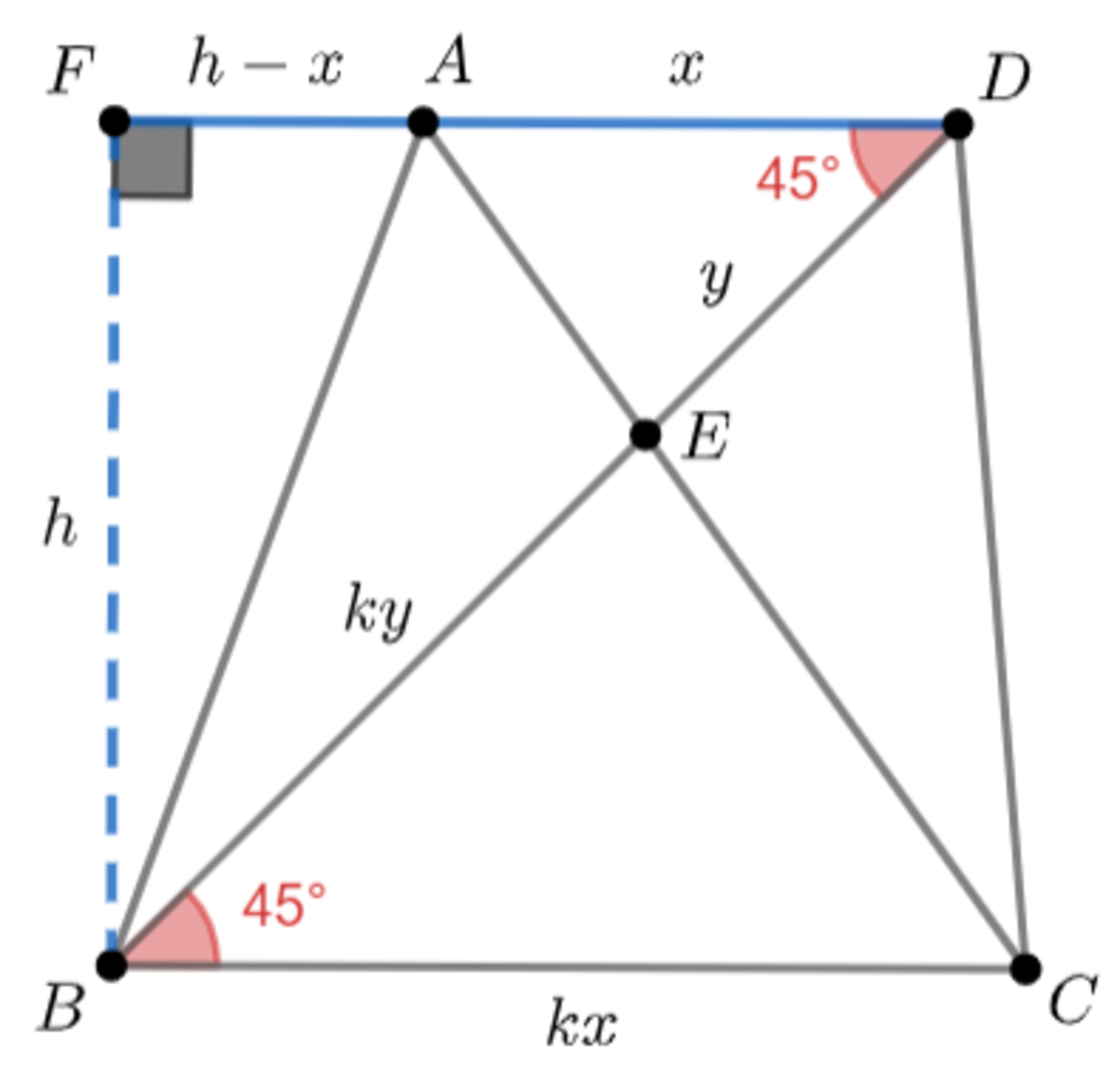Trapezium 2
is a trapezium,
and
. It is known that
,
and the area of
is
. If the height of the trapezium can be expressed as
, where
and
are coprime positive integers and
is square-free, find
.
The answer is 19.
This section requires Javascript.
You are seeing this because something didn't load right. We suggest you, (a) try
refreshing the page, (b) enabling javascript if it is disabled on your browser and,
finally, (c)
loading the
non-javascript version of this page
. We're sorry about the hassle.
Construction: Drop a perpendicular from B to line A D and let F be the foot of the perpendicular. So, B F = h is the height of the trapezium. Since
△
A
D
E
∼
△
C
B
E
, we have,
A
D
C
B
=
D
E
B
E
=
k
, for some constant
k
. Let
A
D
=
x
⟹
C
B
=
k
x
and
D
E
=
y
⟹
B
E
=
k
y
.
Since
△
A
D
E
∼
△
C
B
E
, we have,
A
D
C
B
=
D
E
B
E
=
k
, for some constant
k
. Let
A
D
=
x
⟹
C
B
=
k
x
and
D
E
=
y
⟹
B
E
=
k
y
.
We are given that, A D + D B + B C x ( k + 1 ) + y ( k + 1 ) 2 1 ⋅ ( A D + C B ) ⋅ B F x ( k + 1 ) ⋅ h A D + B C x ( k + 1 ) = 3 5 = 3 5 = 7 5 2 = 1 5 0 2 > B D > y ( k + 1 ) ( 1 ) ( 2 ) ( 3 ) Note that △ B F D is an isosceles right-triangle, so D B 2 y ( k + 1 ) y ( k + 1 ) = B F 2 + F D 2 = h 2 + h 2 = h 2 Substituting this in ( 1 ) and ( 2 ) , defining z = x ( k + 1 ) , we have the system of equations, { z + h 2 = 3 5 z h = 1 5 0 Solving the above equations results in a quadratic with solutions ( h , z ) = ( 2 1 5 2 , 2 0 ) or ( h , z ) = ( 1 0 2 , 1 5 ) If z = x ( k + 1 ) = 1 5 , from equation ( 1 ) , y ( k + 1 ) = 2 0 which contradicts equation ( 3 ) . Thus, the second solution is invalid.
Therefore, the height of the trapezium is h = 2 1 5 2 ⟹ l + m + n = 1 5 + 2 + 2 = 1 9